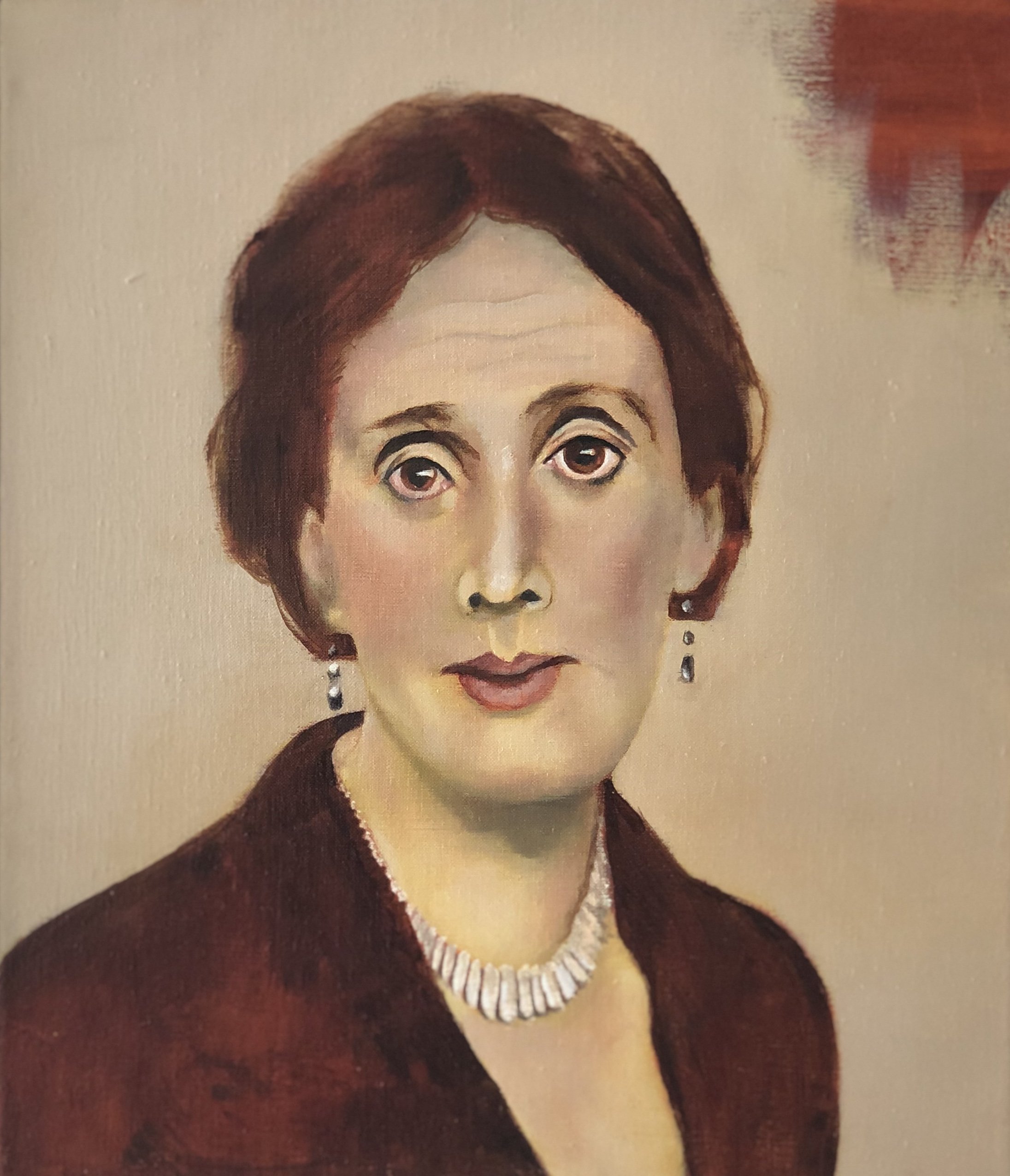“The beauty of the world, which is so soon to perish, has two edges, one of laughter, one of anguish, cutting the heart asunder.”
Virginia Woolf was an English writer and is considered one of the most important modernist 20th-century authors. She pioneered the use of stream of consciousness as a narrative device.
Oil on Linen 35×30 cm 🟢
Woolf was born into an affluent household in London, the seventh child of Julia and Leslie Stephen in a family of eight that included the modernist painter Vanessa Bell. She studied classics and history Ar King’s College London, coming into contact with early reformers of women's higher education and the women's rights movement.
In the spring of 1882, Leslie rented a large white house in St Ives, Cornwall overlooking Porthminster Bay with views to the Godrevy Lighthouse. The family would spend three months each summer there for the first 13 years of Virginia's life and would later influence Woolf's novels Jacob's Room, To the Lighthouse and The Waves
Oil on Paper 28×28 cm 🟢
After her father's death in 1904, the Stephen family moved from Kensington to the more bohemian Bloomsbury, where, in conjunction with the brothers' intellectual friends, they formed the artistic and literary Bloomsbury Group. In 1912, she married Leonard Woolf, and in 1917, the couple founded the Hogarth Press, which published much of her work. They rented a home in Sussex and permanently settled there in 1940.
After the Second World War began, Woolf's diary indicates that she was obsessed with death, which figured more and more as her mood darkened. On 28 March 1941, Woolf drowned herself by walking into the fast-flowing River Ouse near her home, after placing a large stone in her pocket.



